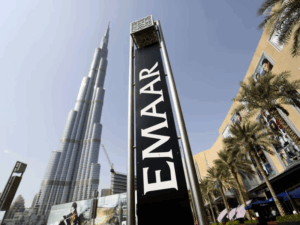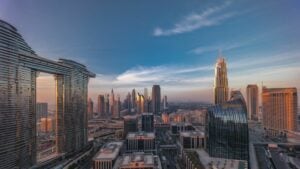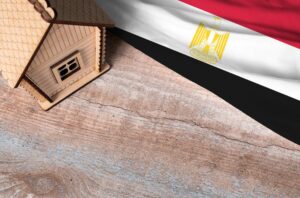
According to analysts, the Dubai real estate market is changing dramatically; they see a strong trend toward mixed-use projects that provide a more complete living environment. In contrast to the conventional real estate strategy, which keeps residential, business, and retail sectors apart, this movement represents a shift. Developers are replacing it with integrated communities that accommodate contemporary lifestyles by combining residential, commercial, and recreational areas into a cohesive whole.
In the past, expansive commercial districts and opulent residential skyscrapers have characterized Dubai’s real estate market. However, developers are reconsidering their approaches as residents’ and investors’ preferences change. According to experts, there is an increasing demand for initiatives providing more than just housing or employment.
The demand for accessibility and ease is a major factor in this change in Dubai real estate. Long commutes between work, home, and recreational activities are no longer desirable to the locals. By providing residential apartments, commercial buildings, retail establishments, and recreational areas all close together, mixed-use complexes alleviate these worries. With everything people need outside their door, these integrated spaces are intended to build thriving, walkable communities.
“Today’s buyers are seeking a lifestyle, not just a house,” says a senior consultant at a top real estate company in Dubai. “People prefer to live in settings that support connectedness, convenience, and healthiness. These demands are met by mixed-use developments, which provide a more complete living environment.
Defining Integrated Living and Increasing Demand in Dubai Real Estate
Developers are increasingly referring to these new communities in Dubai real estate as “holistic living.” In real life, it describes projects that provide more than just a useful area. With features that promote social interaction, healthy living, and a balanced lifestyle, these developments are created with the general welfare of their occupants in mind.
Large green spaces, pedestrian-friendly zones, and a range of recreational amenities, including gyms, spas, and swimming pools are common features of these developments in Dubai real estate, for example. Some also have health and wellness facilities that provide everything from exercise programs to counseling for mental health issues. To meet the various demands of contemporary families and workers, co-working spaces, childcare facilities, and educational facilities are frequently included in the mix.
Such elements are becoming increasingly important in the client’s decision-making while buying property in Dubai real estate, according to a recent survey conducted by the Dubai Land Department (DLD). According to the research, “there is a clear demand for developments that integrate well-being into daily life.” “Just having a house is no longer enough for consumers. They are searching for settings that encourage a more balanced, healthy way of living.
Mixed-use projects and increasing tenants in Dubai’s real estate market
Mixed-use developments are becoming more popular as a profitable alternative for investors in Dubai real estate. According to experts, these projects are a more solid investment because they may draw in a wide variety of tenants, including commercial and residential lessees. Additionally, the allure of residing in a self-sufficient community has led to a high demand from domestic and foreign purchasers, which has raised property values even more.
A property analyst based in Dubai claims that investors in Dubai real estate are drawn to mixed-use complexes because of the long-term stability they provide. “These projects can create multiple revenue streams, including office space, retail, and residential leases, and they typically have lower vacancy rates.”
Mixed-use developments are thought to be more resilient during recessions in addition to providing steady profits. Because mixed-use developments are flexible and adaptable, they are more likely to withstand changes in the market than single-purpose projects, which can suffer if demand for one kind of space drops.
Integration of Sustainability and Smart Cities
Another significant trend affecting the design of these mixed-use complexes in Dubai real estate is the emphasis on sustainability and smart technology. Developers are using state-of-the-art technologies to improve the environmental sustainability and efficiency of their projects as Dubai advances its ambitious Smart City plan.
New constructions in Dubai real estate are increasingly incorporating renewable energy sources, energy-efficient buildings, and intelligent waste management systems. Smart city technology, such as improved data analytics for traffic management and Internet of Things-enabled gadgets for home automation, is also enhancing citizens’ quality of life.
“The real estate industry is playing a crucial role in accomplishing Dubai’s vision to become one of the world’s smartest cities,” a top official at the Dubai Smart City Office said. At the front of this change are mixed-use developments, which provide a model for creating more sustainable, connected, and livable cities in the future.
In Dubai, the growth of mixed-use developments of Dubai real estate is not a fad. The need for integrated, holistic living spaces is anticipated to increase as the city develops more and draws in a workforce around the world. Over the next ten years, experts believe that these kinds of constructions will become the norm in Dubai’s real estate market.
Mixed-use projects that prioritize holistic living experiences are driving a revolutionary change in Dubai’s real estate sector. These projects, which include commercial, residential, and recreational areas, are not only satisfying the needs of contemporary purchasers but also establishing Dubai as a pioneer in intelligent, sustainable city planning.




